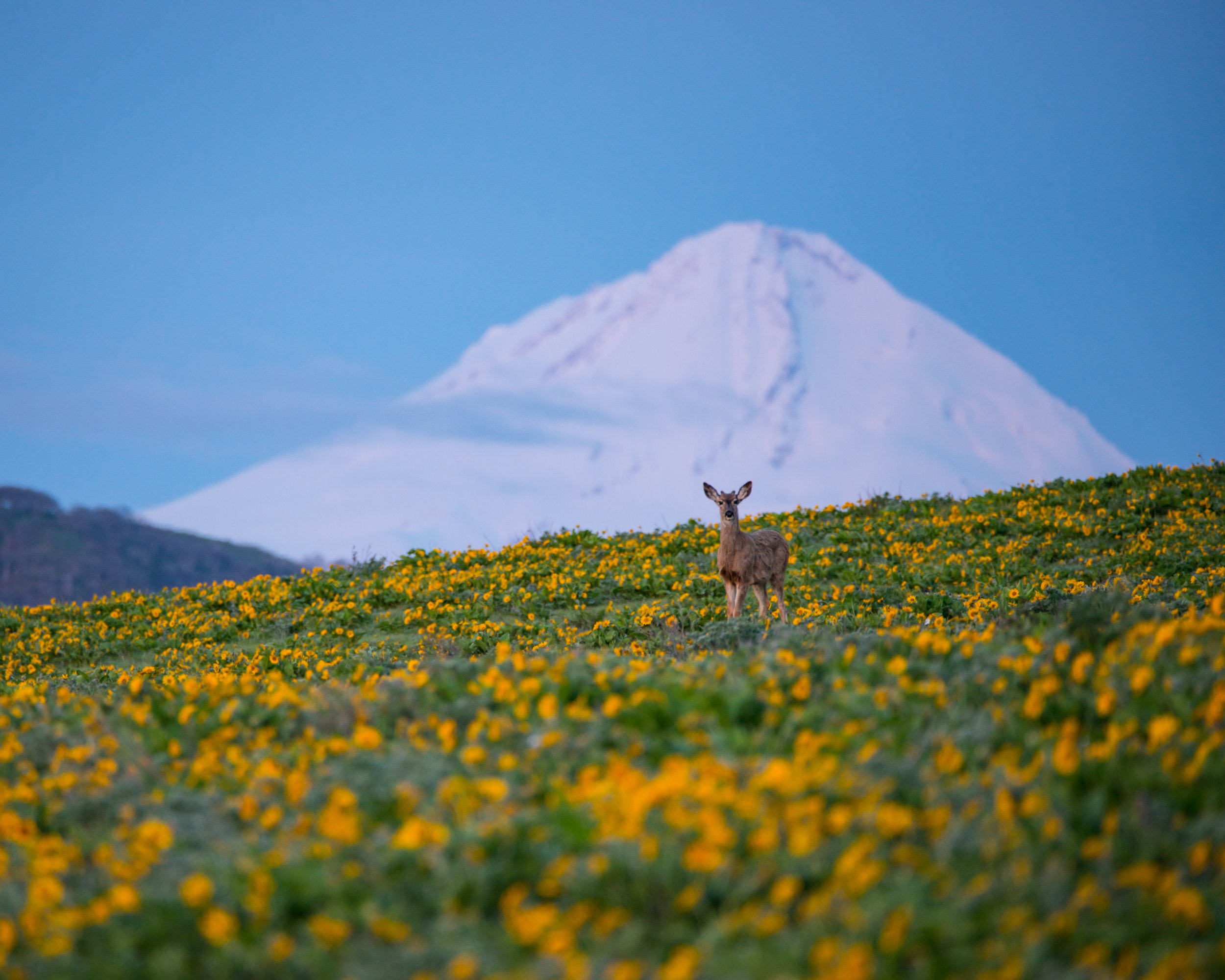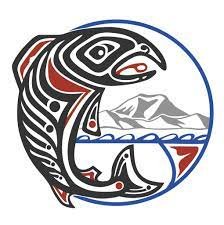
Oregon’s Tribes
Photo by Brian Chambers.
More than 50 Tribes and bands have lived in what is now Oregon, each with their own unique language, culture, and lifeways.
There are currently nine federally-recognized Tribes in Oregon with more than 24,000 members total. Several other federally-recognized and non-recognized tribes also have usual and accustomed land in Oregon.
According to the 2020 U.S. Census, more than 185,000 Oregonians identify as “American Indian or Alaska Native,” representing numerous other Tribes and bands from across the country. Portland, in particular, boasts the ninth largest Urban Indian population in the United States.
Federally-Recognized Tribes
Burns, OR
-
The Burns Paiute Tribe is primarily comprised of the Wadatika Band of Northern Paiute people, but holds lineal family ties to all other Northern Paiute Bands in Oregon and Beyond. The Burns Paiute's Ancestors' carried from generation to generation the oral history of lives lived since time immemorial. The beginning of our world was a time when there was no land, only water. The other four legged and winged beings helped our people acquire our traditional language in a time when land was first created.
Since then, our people, living by a traditional understanding of existence, have practiced a reciprocal relationship with all others inhabiting our traditional lands. Every year our families predictably traveled to seasonally inhabited locations within our homelands to continue our relationships with others in our ecosystem. Our Ancestors were the last truly free Indigenous people in Oregon prior to being forcibly marched in the winter of 1879 from our lands to Ft. Simcoe, Washington.
Our surviving Ancestors were held in exile for half a decade at Ft. Simcoe, prior to being allowed to leave. Those who returned home established themselves in a changing world and planted the seeds for the successful adjudication of a settlement claim for the loss of our Malheur Reservation. Our historic Tribe obtained federal recognition in 1969.
Today, our community, as a sovereign nation, is working to revitalize our lands, our language, and our traditional culture as we also navigate the rigors of the 21st century. We are still here as Creator intended and look forward to passing along our oral and written histories for many generations to come.
Coos Bay, OR
-
CTCLUSI includes the Hanis and Miluk bands of the Coos, the Lower Umpqua and the Siuslaw Tribes. The temperate central/southern coastal landscapes of what is now Oregon are the homelands of our Tribes today and were called home by our Ancestors since time immemorial. Time Immemorial refers to time beyond written record. We recognize this as the time we have called this place our home. Our Nation is connected to this place in ways that are reflected in the landscape and our traditional practices. Our oral traditions and stories supported by archaeological records show that Tribes have resided along the coast. Additionally, scientific studies using carbon dating have consistently supported this. Near Tahkenitch Lake, materials have been dated between 8000-9000 BC. (Over 5000 years before the Egyptian pyramids!). We still introduce some stories by saying “a loooooong time ago...” referring to an event or story that is very old—perhaps thousands of years. CTCLUSI continues to maintain our traditional practices and beliefs that define our unique cultural identity and root our mission as a sovereign nation today!
While our nation is now recognized federally, and both federal and state laws have been adopted to protect our resources, we still struggle to access and protect the resources essential to maintaining our cultural identity. Indeed, it is not only our citizens that have struggled but our resources themselves. Through education we hope to promote the rich diversity of plants and animals of our homelands. The lessons and knowledge of Tribal Nations—in this case our Ancestors—living on the coast are important contributions to current conversations and decision-making on the coast. And all people living in our traditional homelands who are working to care for Oregon's lands and waters. We share the stories, guidance and knowledge here to educate our Tribes' future generations and children throughout the state.
All Tribes share a story of endurance and perseverance. This can be seen across the state of Oregon and across the country. And while Tribal histories are all different, we hope you take with you a curiosity about the history of the place where you stand now and an inspiration to stand alongside us on our mission to renew a place of abundance here.
Since then, our people, living by a traditional understanding of existence, have practiced a reciprocal relationship with all others inhabiting our traditional lands. Every year our families predictably traveled to seasonally inhabited locations within our homelands to continue our relationships with others in our ecosystem. Our Ancestors were the last truly free Indigenous people in Oregon prior to being forcibly marched in the winter of 1879 from our lands to Ft. Simcoe, Washington.
Our surviving Ancestors were held in exile for half a decade at Ft. Simcoe, prior to being allowed to leave. Those who returned home established themselves in a changing world and planted the seeds for the successful adjudication of a settlement claim for the loss of our Malheur Reservation. Our historic Tribe obtained federal recognition in 1969.
Today, our community, as a sovereign nation, is working to revitalize our lands, our language, and our traditional culture as we also navigate the rigors of the 21st century. We are still here as Creator intended and look forward to passing along our oral and written histories for many generations to come.
Grande Ronde, OR
-
The Confederated Tribes of Grand Ronde includes over 30 Tribes and bands from western Oregon, southwest Washington and northern California. Since time immemorial, they had relied on their traditional landscapes for their livelihood. However, the treaties between the Tribes and the United States Government that came with western expansion resulted in the forced removal of tribal people from these ancestral homelands to the Grand Ronde Reservation.
The original Grand Ronde Reservation was 61,000 acres and was established by Executive Order on June 30, 1857. However, numerous federal actions in the late 1800s quickly decreased the Grand Ronde Reservation land base. The Grand Ronde Tribe's federal recognition ended when Congress passed the Western Oregon Termination Act in August of 1954. This legislation stripped the Tribe of its federal status, severed the Tribe's trust relationship with the federal government, and robbed the Tribe of its social, economic and political fabric.
After termination, Grand Ronde remained a community interconnected by families. Tribal leaders refused to accept termination as the Tribe's fate and began working to restore the Tribe's federal status. That dream was realized on November 22, 1983 with the signing of the Grand Ronde Restoration Act (Public Law 98-165) and in 1988 when the Tribe regained 9,811 acres of the original reservation lands under the Grand Ronde Reservation Act. Since restoration, the Grand Ronde Tribe has focused on rebuilding its institutions, developing programs to meet the needs of its members and are strengthening its cultural ties.
Siletz, OR
-
The Confederated Tribes include many tribes and bands whose homelands included all of Oregon west of the Cascade Summit. Ten different languages are represented. Our ancestors signed treaties in the 1850s and agreed to go to the 1.1 million acre Siletz Reservation. The reservation then was taken from us piece by piece without compensation and in violation of treaties, leading up to Termination in 1956. Our tribe then became the second formerly terminated Tribe in the nation, and the first in Oregon, to regain federal recognition through the 1977 Siletz Restoration Act. We have prospered by obeying the Creator's laws and living in balance with the land.
The original Grand Ronde Reservation was 61,000 acres and was established by Executive Order on June 30, 1857. However, numerous federal actions in the late 1800s quickly decreased the Grand Ronde Reservation land base. The Grand Ronde Tribe's federal recognition ended when Congress passed the Western Oregon Termination Act in August of 1954. This legislation stripped the Tribe of its federal status, severed the Tribe's trust relationship with the federal government, and robbed the Tribe of its social, economic and political fabric.
After termination, Grand Ronde remained a community interconnected by families. Tribal leaders refused to accept termination as the Tribe's fate and began working to restore the Tribe's federal status. That dream was realized on November 22, 1983 with the signing of the Grand Ronde Restoration Act (Public Law 98-165) and in 1988 when the Tribe regained 9,811 acres of the original reservation lands under the Grand Ronde Reservation Act. Since restoration, the Grand Ronde Tribe has focused on rebuilding its institutions, developing programs to meet the needs of its members and are strengthening its cultural ties.
Pendleton, OR
-
We still live largely in the place the Creator gave us. While the Umatilla Indian Reservation is only a part of a much larger land use base, it is very precious to us. The Confederated Tribes of the Umatilla Indian Reservation (CTUIR) was created during a very difficult, protracted treaty negotiation by ancestors who knew that we could only continue our way of life in perpetuity if we had a place set aside for that express purpose. The thinking of the treaty commissioners who represented the United States was typical for that era. They assumed that Indian people would survive only by becoming like white people, and they expected reservations to serve as a transitional location toward that end. Instead, this area of land called the Umatilla Indian Reservation has become the stronghold for our Tribal culture and our Tribal resurgence.
Hundreds of generations of ancestors have known the homeland intimately from living on it for thousands of years. Every creek, spring, pond, swale, saddle, box canyon, draw, and peak witnessed our people's long history here, and our people knew all the features of this land. Our children also must know the land if they are going to take care of it when they inherit this responsibility. We hope that others might appreciate what our people have known for so very long—that our relationship with our land is tantamount to our core cultural identity.
Warm Springs, OR
-
The Confederated Tribes of Warm Springs is comprised of three tribes: The Wasco, Paiute, and Warm Springs Tribes. To begin we tell the story of the tribes on the Columbia River.
The Columbia River Plateau and Basin provided a rich life for the River people of the region. A dynamic culture flourished along this artery of life. The people shared similar languages, cultures, diets, religions, a history of interaction, and a sharing of common resources and trade. The Columbia River and lands provided salmon. The foothills and mountain slopes were plentiful with deer, roots and berries that sustained a healthy diet.
North Bend, OR
-
The Coquille Indian Tribe traces our ancestry to Athabaskan and Miluk speakers who, for thousands of years, cherished the bountiful forests, rivers and beaches of southern Oregon. One of our people's oldest stories tells that when the world was made, blue clay was scooped from under the water to make the land. Woven mats and basketry were used to line the shore, protecting the land from ocean waves. Our long history binds us forever to the lands and waters of southwestern Oregon.
The 19th century brought disease, gold mining and westward expansionism that nearly erased our people. Treaties with the U.S. government went unratified by Congress. Our ancestral culture nearly went extinct.
In 1954, Congress declared the Coquille Tribe “terminated," but we endured. Restored to federal recognition in 1989, we are rebuilding our nation. Today we number more than 1,100 members. We have regained more than 10,000 acres of our ancestral homeland, and we proudly manage the bulk of it as sustainable forest. We are uniquely blessed to be stewards of these lands we call home.
-
The Cow Creek Band of Umpqua Tribe of Indians has a rich history in southwestern Oregon that reflects hard work, perseverance and the desire to be self-reliant. For generations, our people, Nahánkhuotana, have lived between the Cascade and the Coast ranges in the Umpqua and Rogue River watersheds. Our homeland is one of beauty with high mountains, forested uplands and valley floors that provided abundant resources to sustain our tribal way of life.
Today, the Cow Creek Band of Umpqua Tribe of Indians upholds Tribal Government, protects and preserves Tribal sovereignty, history, culture and the general welfare of the Tribal membership, and serves to provide for the long-term economic needs of the Tribe and its members through the economic development of Tribal lands. The Tribe encourages and promotes a strong work ethic and personal independence for Tribal members, while strongly upholding the “government to government" relationship with local, State and Federal governments. The Tribe constantly strives to maintain and develop strong cooperative relationships that benefit the Tribe and local community.
Roseburg, OR
-
The Klamath Tribes- Treaty of 1864
We are the Klamath Tribes- the Klamath, the Modoc and the Yahooskin-Paiute people, known as mukluks and numu (the people). We have lived in the Klamath Basin of Oregon, from time beyond memory. Our legends and oral history tell about when the world and the animals were created, when the animals and Gmok'am'c – the Creator – sat together and discussed the creation of man. If stability defines success, our presence here has been, and always will be, essential to the well-being of our homeland and those who abide here.
In the old times we believed everything we needed to live was provided for us by our Creator in this rich land east of the Cascades. We still believe this. We saw success as a reward for virtuous striving and likewise as an assignment of spiritual favor, thus, “Work hard so that people will respect you", was the counsel of our elders. For thousands upon countless thousands of years we survived by our industriousness. When the months of long winter nights were upon us, we survived on our prudent reserves from the abundant seasons. Toward the end of March, when supplies dwindled, large fish runs (c'waam) surged up the Williamson, Sprague, and Lost River. Still today (after the first snow in March) we celebrate the Return of c'waam Ceremony; it is a spiritual ceremony handed down through the generations.
The six bands of the Klamath were bound together by ties of loyalty and family. They lived along the Klamath Marsh, on the banks of Klamath Lake, near the mouth of the Lower Williamson River, Pelican Bay, beside the Link River, and in the uplands of the Sprague River Valley. The Modocs' lands included the Link River, Lower Lost River, Clear Lake, the Lava Beds, and the territory that extended south as far as the mountains beyond Goose Lake and Mount Shasta. The Yahooskin- Paiute Bands occupied the area east of Yamsay Mountain, south of Lakeview, and north of Fort Rock. Everything we needed was contained within these lands.
In 1864 we signed a treaty with the federal government to secure hunting, fishing, gathering, and water rights on the new reservation. We ceded nearly 22 million acres and retained approximately 1.5 million acres for ourselves (we thought) forever. Our Treaty was ratified and proclaimed in 1870 by the U.S. Senate and President Grant of the United States of America.
In 1986, after thirty-two years of persistent lobbying, dedication, and perseverance, the Klamath Tribes regained Federal restoration and termination was revoked through passage of P.L. 99-398, The Klamath Indian Tribe Restoration Act, signed by President Reagan. However, we were the only tribe to be “restored" without a land base. Nevertheless, with restoration we regained our treaty rights in the 1954 treaty boundary area of southern Oregon.
Today, we are one of nine sovereign tribal nations in the state of Oregon. The mission of the Klamath Tribes is to protect, preserve and enhance the spiritual, cultural, and physical values and resources of the Klamath, Modoc, and Yahooskin-Paiute peoples by maintaining the customs and heritage of our ancestors. We are taught, “naanok ?ans naat sat'waYa naat ciiwapk diceew'a": We help each other; We will live well."
Chiloquin, OR
Tribal information courtesy of the Legislative Commission on Indian Services
Other Tribes who Share Geography with Oregon
Chief Joseph Band of Nez Perce at the Confederated Tribes of the Colville Reservation
Nespelem, WA
Chinook Indian Nation (non-recognized)
Bay Center, WA
Toppenish, WA
Longview, WA
McDermitt, NV
Lapwai, ID
Miami, OK
Smith River, CA


















